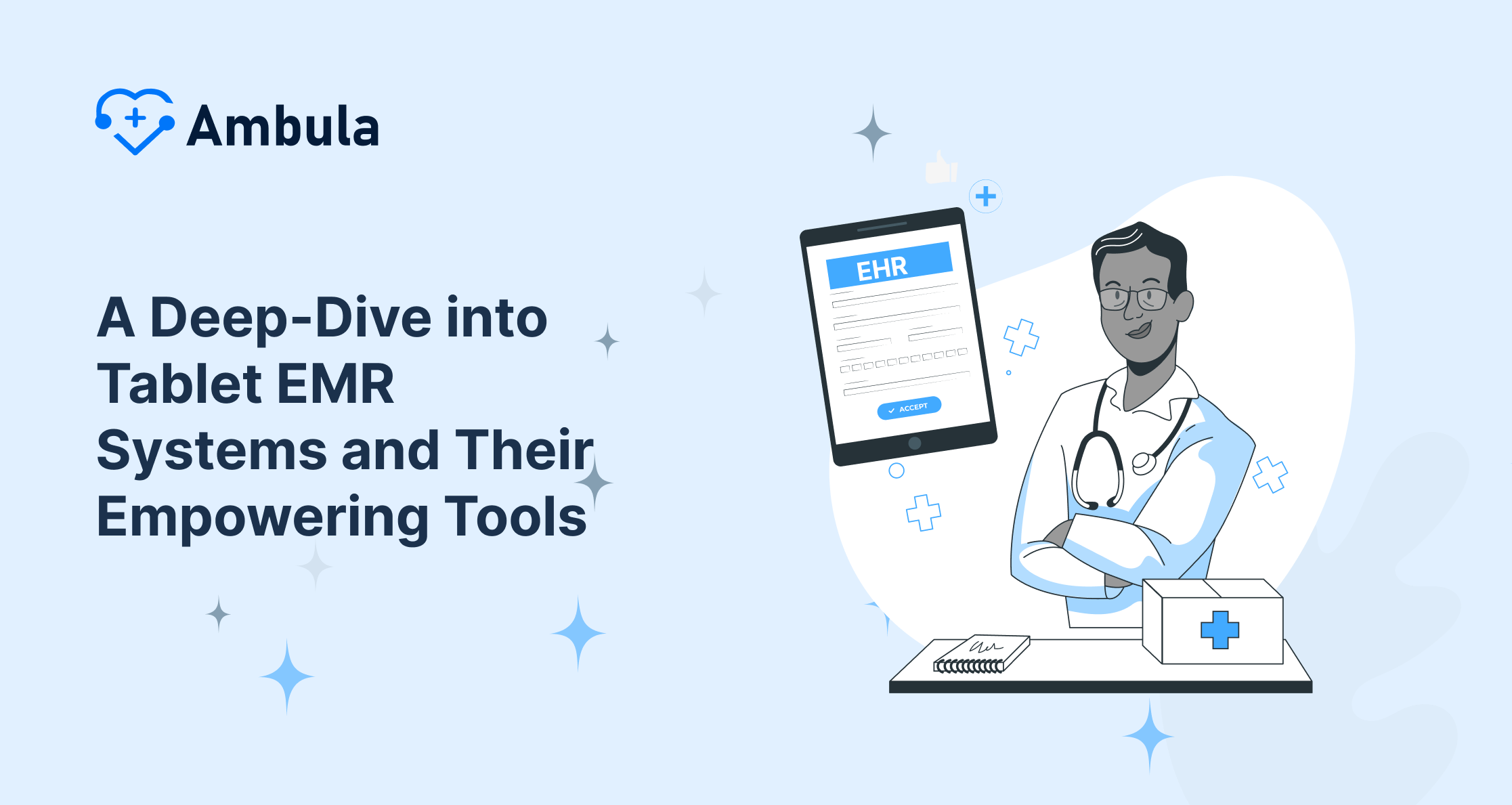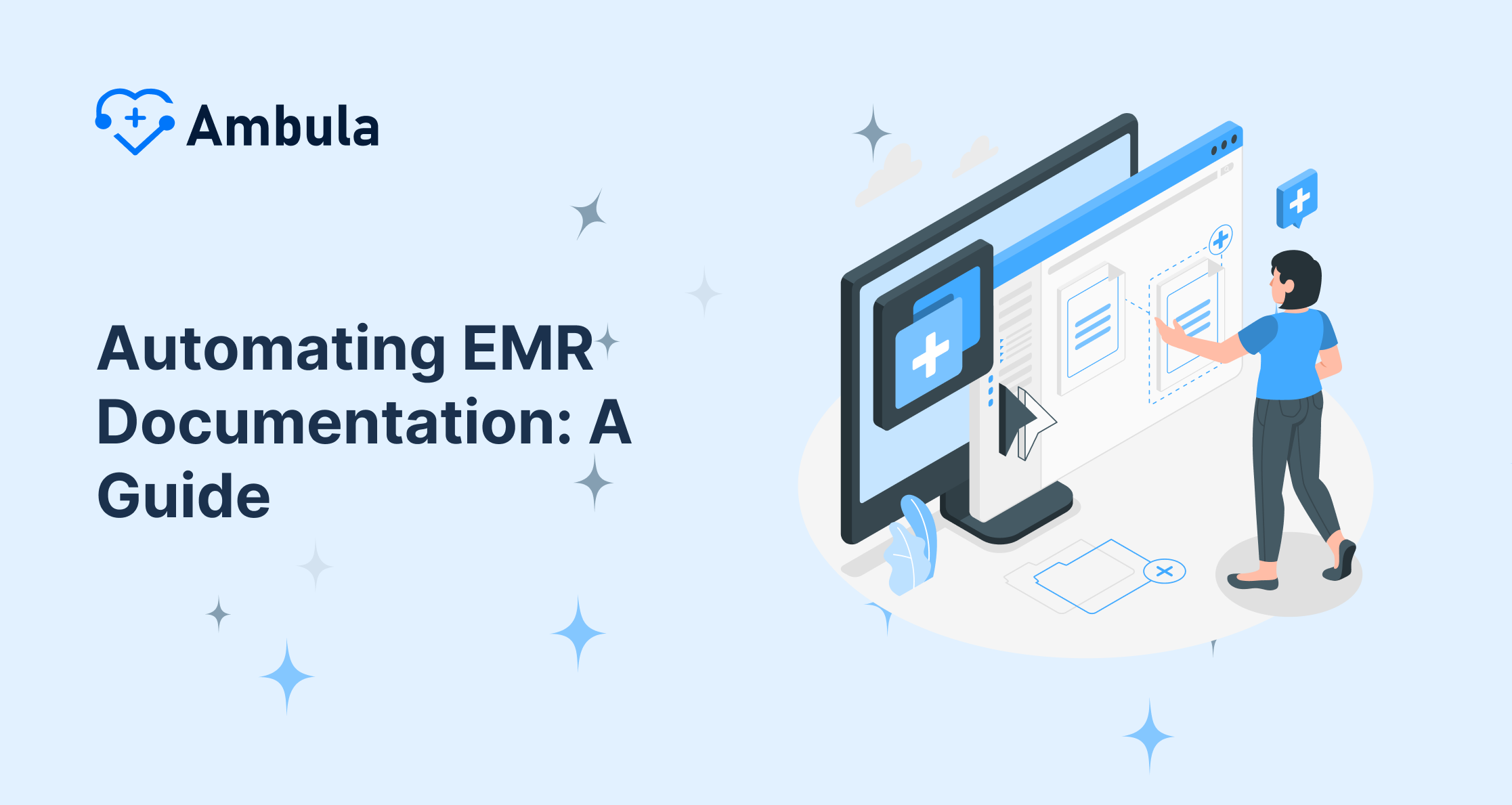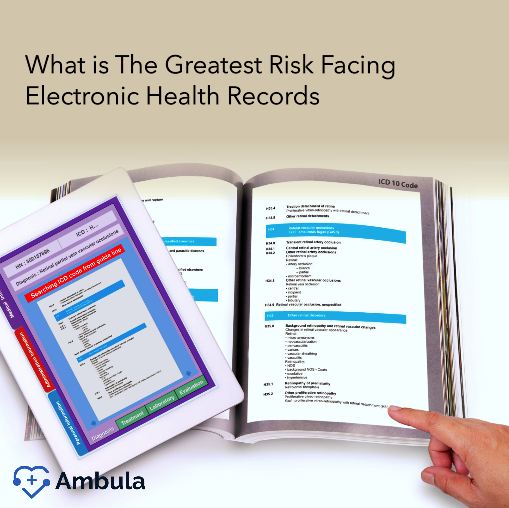The use of Electronic Health Records (EHR) has become a key issue in today’s healthcare. EHR systems can improve patient care and boost productivity, but many doctors still face big challenges when trying to put them into action. How much healthcare providers use EHR differs a lot from country to country. Some have jumped on board with the tech, while others are still working to get past various roadblocks.
To grasp why EHRs have been slow to catch on, we need to look at the big hurdles doctors face. These include things tied to doctors themselves, like pushing back against change and worrying about electronic health records. There are also problems with the systems such as trouble getting different systems to talk to each other and glitches in EHR setups. Organizations struggle too, with high costs to put these systems in place and a tough time picking the right vendor. Outside factors also play a role, like worries about keeping info private and following all the rules. By tackling these roadblocks, health care providers can smooth the way for EMR/EHR use and tap into all that digital health records have to offer.
Physician-Related Roadblocks
Pushing Back Against Change
Doctors pushing back against change stands as a major hurdle to EHR adoption. Many physicians don’t want to shake up their set work habits and routines. Bringing in EHRs often means big shifts in how they do their jobs and run their practices, which can spark reluctance or flat-out resistance. This pushback comes from worries about messing with tried-and-true methods and how it might affect patient care.
Lack of Computer Skills
Using EHR systems involves complex technical aspects that require healthcare providers to be skilled. Computer know-how plays a key part in making EHRs work well. We can define computer know-how as the knowledge about computers needed to get, share, handle, and understand the basic information essential to make good choices about health.
A South African study showed different levels of computer skills among health workers. Most people who answered could use basic programs well. These included Microsoft Word (63.4%) email (76.6%), and WhatsApp (73.3%). But they had trouble with harder programs. For Microsoft Excel, 56.7% weren’t good at using it. For Microsoft Access, 70% couldn’t use it well. This lack of advanced computer know-how can make it hard to use EHR systems . These systems often need users to be good at entering data moving around the system, and looking at information.
Putting EHRs into action needs doctors to type well so they can input patient health info, notes, and prescriptions. Some doctors struggle with typing, which can slow them down and make them upset. Listening to patients’ problems figuring out what’s important thinking about treatments, and typing notes at the same time takes a lot of focus and knowing how to use the system well – even people who are great with computers often don’t have all these skills.
Concerns about Patient Relationships
Lots of doctors are concerned that using EHRs during patient visits might hurt their relationship with patients. They often worry that looking at the computer screen could mean less eye contact and personal interaction with patients. This change in focus can make patients feel uneasy and less involved in their visit.
Take this example: some patients have said they feel puzzled when doctors look at the computer screen without saying why. In one case, a patient thought about switching doctors because his doctor spent most of the visit typing. This made the patient uncomfortable and caused the conversation to feel strange and guided by what was on the computer screen.
A computer in the exam room can affect how doctors interact with patients in different ways. Doctors who already connect well with patients when using paper charts may find that the computer screen helps them focus even more on the patient. But for doctors who struggle with people skills electronic health records (EHRs) might make their patient interactions worse.
Doctors can take some steps to keep a good relationship with patients while using EHRs:
- Let patients know about the EHR system
- Tell them what they’re doing as they use the tool
- Get patient input on EHR use during visits
- Often check and share good methods with coworkers
- Include patients in setting up the EHR system
By tackling these doctor-related hurdles medical staff can help to overcome resistance to change, boost computer skills, and keep strong bonds with patients while bringing in EHR systems.
System-Related Barriers
Bad User Interface
One of the main hurdles to EHR adoption is the bad user interface of many systems. Usability has an impact on EHR implementation. It refers to how well technology helps users reach specific goals in a way that’s satisfying, effective, and efficient. Bad EHR usability leads to clinician dissatisfaction, burnout, and patient harm events. Studies show that to redesign usability can cut down errors, improve workload, and boost satisfaction.
The gap between EHR design and the needs of complex inpatient settings often has an impact on the lack of standard workflows. Doctors and nurses often struggle to follow new processes after EHR rollout, which disrupts patient care. For instance, some medical staff have grumbled that they must wait to triage patients and assign them to doctors in EHRs or for doctors to enter data before they can finish their work slowing down patient care.
Limited Customization
The restricted options to tailor EHR systems create a major obstacle for healthcare providers to adopt them. Many medical facilities find it tough to change their work processes to back new EHR features or develop new EHR functions that fit their current ways of working. This lack of adaptability can cause healthcare providers to feel annoyed and make it hard to use EHRs in everyday medical care.
The lack of ability to customize EHRs for specific organizational needs has an impact on the slow progress in making EHRs more usable and safe for patients. Health care organizations, providers, and vendors must work together to improve EHR usability. They need to find solutions that work for patients and providers.
System Downtime
System downtime events create a big problem for EHR adoption and use. This applies to both planned and unplanned events. Downtime means any time when parts or all of the EHR don’t work. These events can put patients at risk. This happens because doctors can’t see important patient info or use safety tools, like systems that help make clinical decisions.
A study looking at patient safety event reports during downtime events showed that lab-related incidents made up 48.7% of reports, with medication administration issues following at 14.5%. When systems were down, lab test results took 62% longer on average compared to normal operations 5. These hold-ups can have a big impact on how doctors make decisions and care for patients.
To lower the risks linked to downtime, healthcare organizations should:
- Come up with and practice thorough downtime procedures
- Improve paper processes for all ordering (such as medications, labs diagnostic tests)
- Adapt downtime processes to the specific needs of the event instead of just printing out electronic records
- Set up clear communication procedures across hospital departments
- Pay attention to patient identification when creating, training for, and practicing downtime procedures
By tackling these system-related obstacles, healthcare organizations can work to boost EHR adoption and improve the overall quality of patient care.
Organizational Obstacles
Insufficient Leadership Support
One of the main organizational roadblocks to EHR adoption is a lack of support from leaders. Healthcare organizations often fail to implement HIT due to poor leadership 6. Leaders have a key part in making sure EHR systems are adopted , and their backing has an impact on how much clinicians adopt EHRs 7. But leaders don’t always know what they should do when it comes to putting HIT into action.
Studies indicate that healthcare leaders need additional assistance when they take an active part in HIT implementation. Their personal tech skills have an influence on how other healthcare professionals adopt HIT and play a crucial role in their backing. To tackle this problem, leaders should get training to understand current systems, plan for the organization, and to support HIT implementation. By joining IT forums and learning more about government rules and policies, leaders can adjust better to complex HIT implementation and keep a good outlook towards it.
Inadequate Training
Research has shown that not enough training holds back EHR adoption. A deep dive into what healthcare workers think in Gulf Cooperation Council countries pointed out that a lack of training is a big problem. In the same way, findings from western Canada show that the lack of good hands-on training and help for EHR systems has hurt how well they’ve been put into use.
In India, two-thirds of medical professionals said they didn’t have enough EHR training, which made it hard to adopt 7. This shows how important it is to think about training when trying to put EHR systems in place. Good training isn’t just a nice-to-have, it’s a must-have to make sure a practice does well and keeps going.
To deal with this problem, healthcare organizations should:
- Make staff training a key part of EHR rollout
- Set aside enough time, work, and money to train staff
- Create full training plans that teach all parts of EHR use
- Give ongoing help and teaching to keep skills sharp
People Resisting Change
Healthcare workers often push back against EHRs, which can slow down their use. This happens because people don’t want to change how they work. Many doctors and nurses worry about how EHRs will affect their daily work and patient care 1.
A few things cause this pushback:
- Doctors and nurses don’t like to change how they work: They often stick to their usual ways and don’t want to try new things.
- EHRs mess up how people do their jobs: Putting in EHRs means big changes to how things get done, and it’s hard to get used to.
- What doctors think matters: If doctors don’t like EHR systems, they won’t use them well or at all.
- User acceptance: For healthcare professionals to accept and use EHR systems plays a key role in their successful rollout.
To beat cultural pushback, organizations should zero in on:
- Getting users involved in picking and setting up the EHR
- Showing how EHR systems help patient care and make work smoother
- Giving constant support and fixing issues
- Building a workplace that welcomes new ideas and always tries to get better
By tackling these company hurdles – bosses not backing it poor training, and people resisting change – healthcare groups can boost their chances of making EHR work well. This can lead to better patient care more efficient work, and improved health outcomes across the board.
External Barriers
Vendor Issues
The quality and reliability of EHR vendors play a crucial role in the adoption of electronic medical records by physicians. Many healthcare providers express concerns about vendor qualifications and their ability to provide proper service. The relatively new marketplace for EHR systems has led to an immature industry with insufficient viable products and competitors. This situation has resulted in a lack of information for physicians to make informed decisions about vendors.
One of the primary concerns is the possibility of vendors going out of business, leaving healthcare organizations without technical support and facing significant financial losses. As the market becomes more competitive, vendors will need to differentiate themselves based on the quality and reliability of their EHR systems.
The lack of technical training and support from vendors has been identified as a significant barrier to EHR adoption 9. To address this issue, healthcare organizations should carefully evaluate vendor qualifications, support services, and long-term viability before selecting an EHR system.
Regulatory Compliance
Compliance with regulatory requirements poses a significant challenge for healthcare organizations implementing EHR systems. One of the most critical regulations is the Health Insurance Portability and Accountability Act (HIPAA), which governs the handling of electronic protected health information (ePHI).
Healthcare organizations must ensure that their EHR integrations are secure to avoid the risk of ePHI exposure and costly penalties. This requirement adds complexity to the implementation process and requires careful consideration of security measures throughout the EHR lifecycle.
To address regulatory compliance challenges, healthcare providers should:
- Implement robust security measures for EHR systems
- Regularly assess and update security protocols
- Provide ongoing training for staff on HIPAA compliance
- Conduct thorough risk assessments of EHR integrations
Lack of Standardization
The absence of standardization in data formats and interoperability across EHR platforms presents a significant barrier to adoption. This lack of uniformity contributes to increased costs and time burdens for healthcare providers, who must support manual workflows to align and integrate disparate data sources.
Several key issues arise from the lack of standardization:
- Variability in data formats and display of key data elements hinders automation and makes it difficult for providers to quickly digest information.
- Workflows supporting prior authorization, eligibility and benefit verification, and the exchange of attachments are particularly affected by these inefficiencies.
- Manual data entry is often required for reconciliation, increasing workload and the potential for errors 11.
To address these challenges, the healthcare industry should focus on:
- Developing structured data standards to improve interoperability, integration, and data accuracy.
- Leveraging API technologies to query data sources and provide information at the point of care.
- Establishing uniform data input standards for remote health monitoring to facilitate real-time exchange of critical health issue alerts.
- Implementing bi-directional interfaces with state and laboratory systems to ensure quick and secure exchange of patient data.
Additionally, the integration of telehealth platforms with EHRs remains inadequate, forcing healthcare providers to manage multiple devices and software during virtual visits. To overcome this challenge, providers must address the significant costs associated with infrastructure investments for telehealth integration.
By addressing these external barriers, healthcare organizations can work towards more seamless EHR adoption and improved patient care. Standardization efforts, coupled with robust vendor support and regulatory compliance measures, will play a crucial role in overcoming these challenges and realizing the full potential of EHR systems.
Conclusion
The adoption of Electronic Health Records (EHRs) by physicians faces several hurdles that have a significant impact on the healthcare landscape. From physician-related barriers like resistance to change and concerns about patient relationships, to system-related issues such as poor user interfaces and limited customization, these challenges create a complex environment for EHR implementation. On top of that, organizational barriers including lack of leadership support and inadequate training, along with external factors like vendor issues and regulatory compliance, add layers of complexity to the adoption process.
To overcome these obstacles, healthcare organizations need to take a multifaceted approach. This means focusing on improving user interfaces, providing comprehensive training programs, and fostering a culture of innovation within healthcare settings. What’s more, addressing external barriers through better vendor selection processes and standardization efforts can lead to more seamless EHR adoption. By tackling these challenges head-on, the healthcare industry can move towards realizing the full potential of EHRs, ultimately leading to enhanced patient care and improved healthcare outcomes.
FAQs
What are some common obstacles to adopting electronic health records (EHRs)? In the reviewed literature, authors identified 39 barriers to EHR adoption, appearing 125 times in total. The most frequently mentioned barriers include cost, technical concerns, technical support, and resistance to change.
Why haven’t some physicians adopted an EHR system yet? More than half of the physicians who have decided against adopting an EHR system cite a lack of financial resources as their primary reason. Additionally, 48% of these physicians point to a lack of time, and 40% mention insufficient staff as significant factors in their decision.
What challenges might one face when implementing an EHR system? The six common challenges faced during EHR implementation include technical ability, cost of use, human factors, workflow integration, training, and privacy concerns.
What are the main barriers to the adoption of healthcare information systems? The primary barriers are the cost of purchasing the system, potential loss of productivity, ongoing maintenance costs, the adequacy of training for users, and finding a system that meets the specific needs of the practice. It is crucial for healthcare managers to ensure that employees understand the importance of maintaining patient privacy.
External Barriers
Vendor Issues
EHR vendors’ quality and reliability have a major impact on how doctors adopt electronic medical records. Healthcare providers often worry about vendor qualifications and their ability to give good service 9. The EHR system market is pretty new, which has led to an industry that’s not grown yet, with not enough solid products and competitors. This means doctors don’t have enough info to make smart choices about vendors.
One of the main worries is that companies might go bust leaving hospitals and clinics without tech help and facing big money losses. As the market gets tougher, companies will need to stand out based on how good and reliable their EHR systems are.
The absence of proper tech training and vendor support has proven to be a big hurdle in getting more people to use EHRs. To fix this problem, health centers should take a close look at how qualified vendors are, what kind of help they offer, and if they’ll stick around for the long haul before picking an EHR system.
Regulatory Compliance
Following the rules set by regulators is a tough job for health centers that want to put EHR systems in place. The Health Insurance Portability and Accountability Act (HIPAA) stands out as one of the most important laws. It tells healthcare providers how to handle electronic protected health information (ePHI).
Healthcare organizations must make sure their EHR integrations are safe to prevent ePHI leaks and expensive fines. This need complicates the setup process and demands careful thought about safety measures throughout the EHR’s life.
To tackle regulatory compliance issues, healthcare providers should:
- Put strong safety measures in place for EHR systems
- Check and update safety rules often
- Keep training staff on HIPAA rules
- Do thorough risk checks of EHR integrations
Lack of Standardization
The lack of standard data formats and EHR platform compatibility creates a big roadblock for adoption. This inconsistency leads to higher costs and more time spent by healthcare providers, who need to use manual methods to bring together and match up different data sources .
The absence of standards causes several main problems:
- Differences in how data is formatted and key information is shown make it hard to automate tasks. These differences also slow down providers trying to understand the data.
- These problems have a big impact on workflows for getting prior approval, checking eligibility and benefits, and sharing attachments.
- Reconciliation often needs manual data entry, which increases workload and makes mistakes more likely.
To tackle these issues, the healthcare sector needs to concentrate on:
- Create structured data standards to make systems work better together, combine more , and keep data correct.
- Use API technologies to search data sources and give information when and where care happens.
- Setting up standard data input rules for remote health tracking to enable quick sharing of important health alerts.
- Creating two-way connections with state and lab systems to make sure patient data moves fast and stays safe.
Also, telehealth platforms don’t work well with electronic health records (EHRs). This forces doctors to juggle multiple gadgets and programs during online appointments. To fix this problem, healthcare providers need to spend a lot of money to upgrade their systems for telehealth.
By tackling these outside hurdles, health providers can aim for smoother EHR uptake and better patient care. Efforts to standardize, along with strong support from vendors and steps to follow regulations, will be key to beating these obstacles and getting the most out of EHR systems.
Conclusion
Doctors face many obstacles when adopting Electronic Health Records (EHRs), which have an impact on healthcare. Doctors resist change and worry about patient relationships. Poor user interfaces and limited customization make EHR systems hard to use. On top of that, organizations lack leadership support and don’t train staff well. Outside factors like vendor problems and following regulations make it even harder to adopt EHRs. All these issues create a tricky situation for putting EHRs into action.
To beat these hurdles, hospitals and clinics need to try several things at once. This means making screens easier to use giving thorough lessons, and pushing for new ideas in health centers. Also, dealing with outside problems by picking better sellers and making things more standard can help EHRs fit in smoother. By facing these issues head-on, doctors and nurses can start to see all the good EHRs can do, which in the end means better care for patients and better health results.
FAQs
What are some common obstacles to adopting electronic health records (EHRs)? The reviewed literature identified 39 barriers to EHR adoption, which appeared 125 times in total. The barriers mentioned most often include cost technical concerns technical support, and resistance to change.
Why haven’t some physicians adopted an EHR system yet? Over half of the physicians who chose not to adopt an EHR system say they lack financial resources as their main reason. Also, 48% of these physicians say they don’t have enough time, and 40% say they don’t have enough staff to implement an EHR system.
What challenges might one face when implementing an EHR system? Six common challenges crop up during EHR implementation: technical ability cost of use human factors workflow integration, training, and privacy concerns.
What are the main barriers to the adoption of healthcare information systems? The main barriers include the cost to purchase the system possible drops in productivity ongoing costs to maintain adequate user training, and finding a system that fits the practice’s specific needs. Healthcare managers must make sure employees know how important it is to protect patient privacy.
References
https://www.ncbi.nlm.nih.gov/pmc/articles/PMC8455291/
https://www.officepracticum.com/blog/6-common-challenges-in-ehr-implementation
https://www.ncbi.nlm.nih.gov/pmc/articles/PMC3766548/
https://www.truenorthitg.com/top-5-challenges-with-ehr-integrations/
https://www.caqh.org/blog/breaking-down-barriers-impact-ehr-integrations-healthcare-efficiency-and-care-delivery






